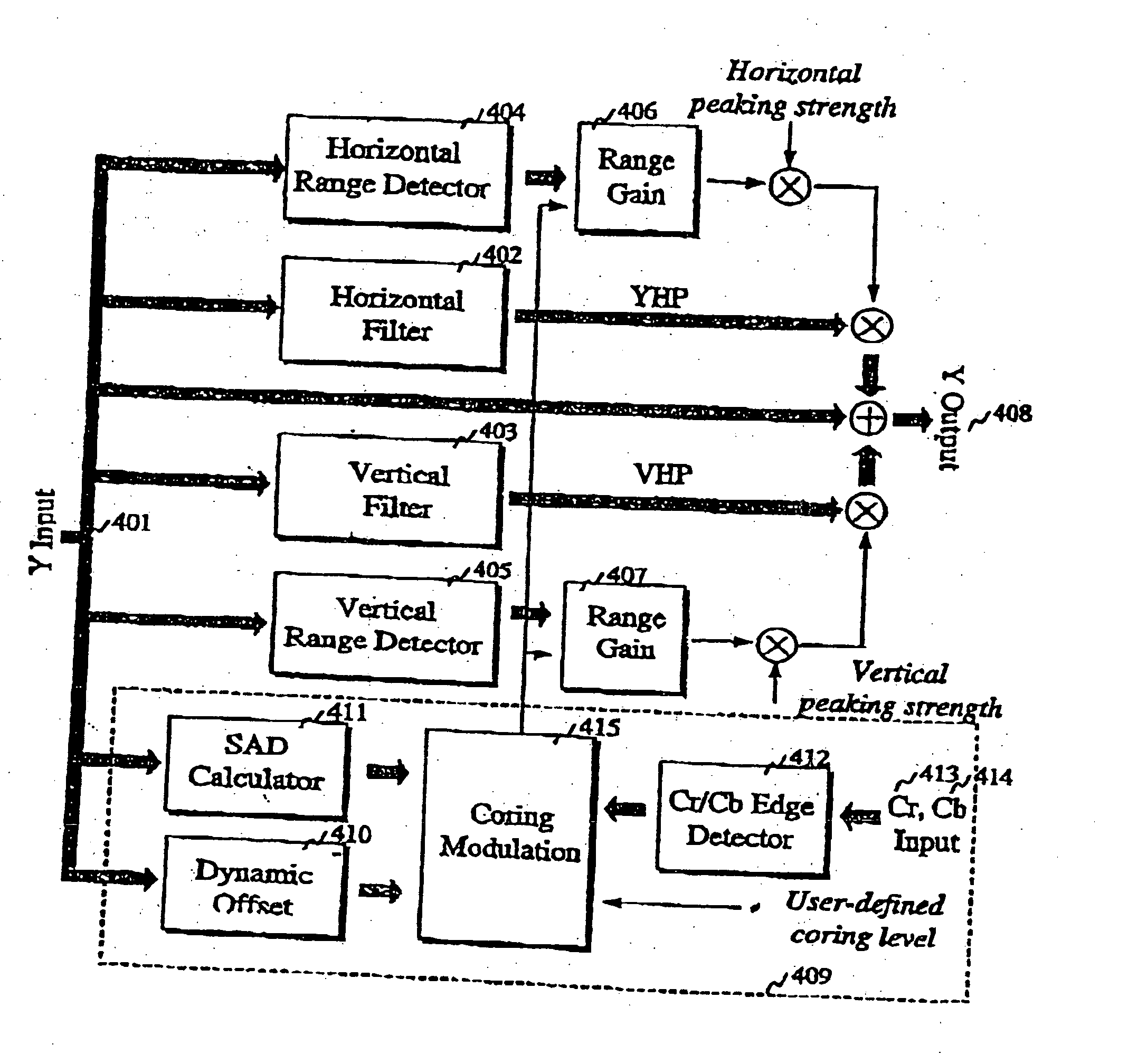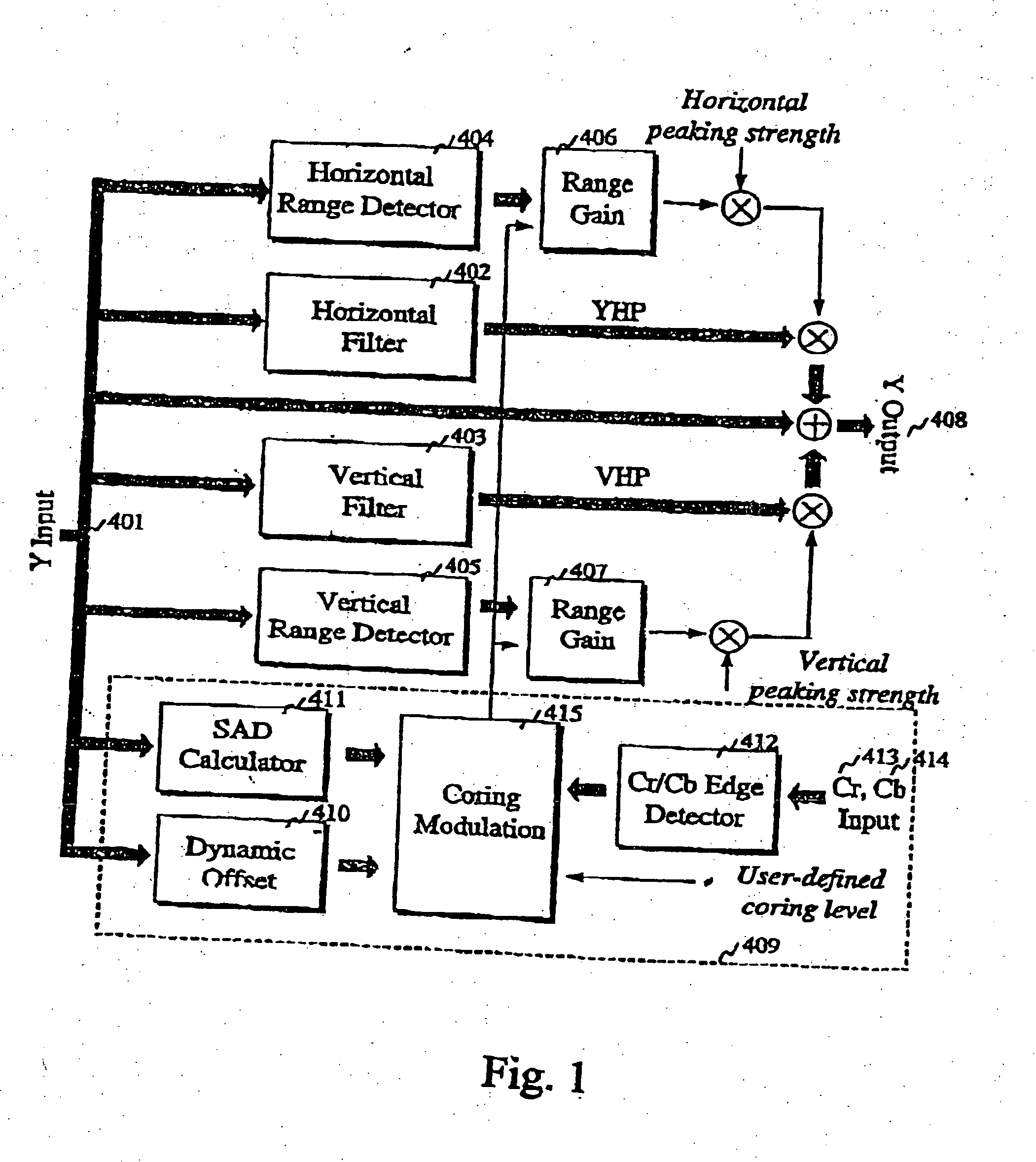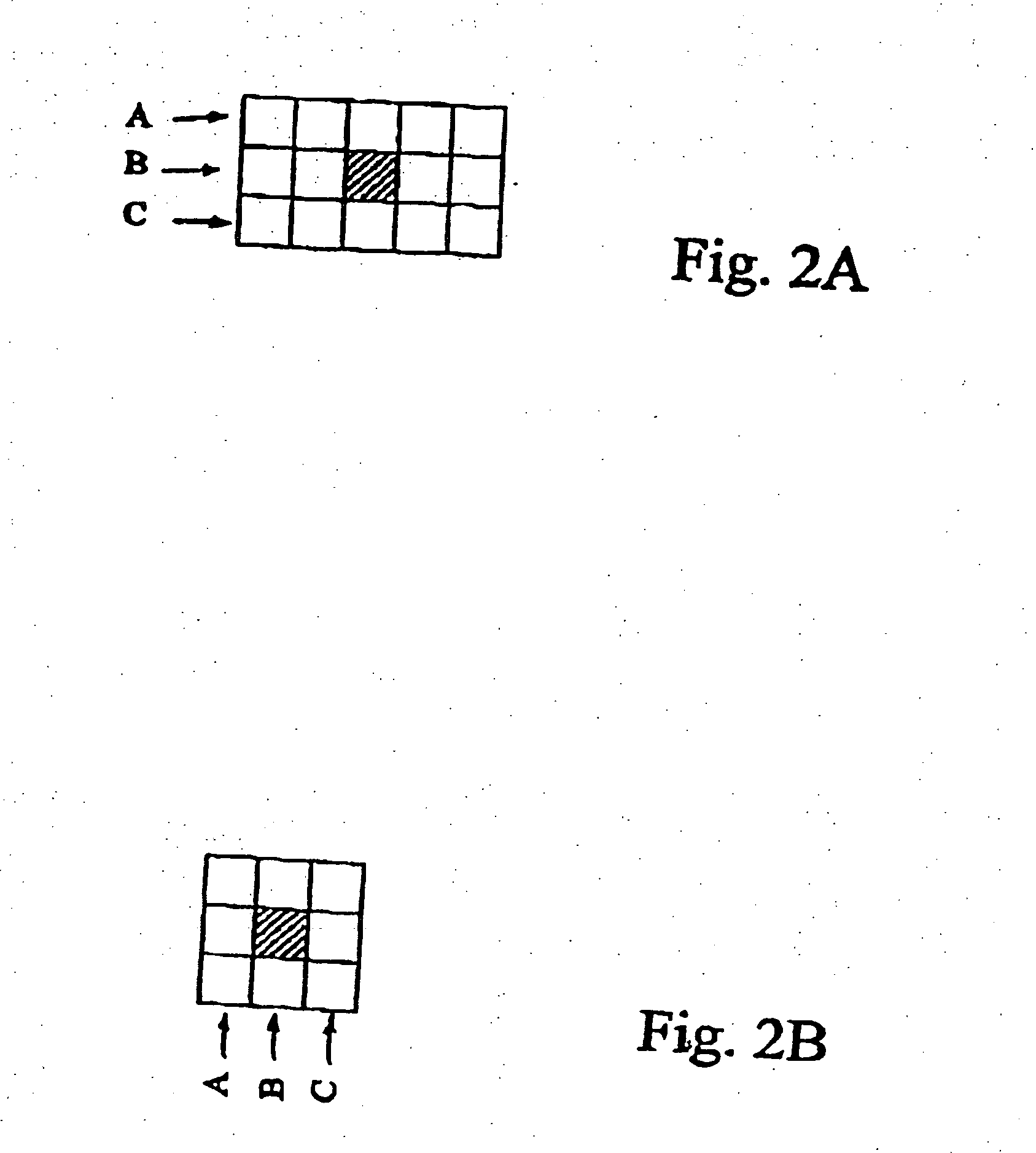Adaptive coring for video peaking
a coring and video technology, applied in the field of video signal processing, can solve the problems of difficult to achieve optimal peaking and noise coring, prior art solutions, visible distortion in the displayed video image, etc., and achieve the effect of increasing the chance of coring and noise more readily visibl
- Summary
- Abstract
- Description
- Claims
- Application Information
AI Technical Summary
Benefits of technology
Problems solved by technology
Method used
Image
Examples
Embodiment Construction
[0032] Throughout the specification, the term “peaking” refers to an image enhancement technique whereby “edges” or transition areas within an image are sharpened by selectively emphasizing frequency components of a signal which represents the image. The term “peaking filter” refers to a filter which may emphasize selected frequency bands of a signal relative to other frequency bands within the signal. The term “coring” refers to the suppression of peaking effects across specific frequency components of a signal and is typically employed to minimize the enhancement of noise components within the input luminance signal.
[0033]FIG. 1 illustrates a first embodiment of the present invention for processing an input luminance signal (401) such as is produced by a composite signal decoder, an MPEG decoder, or the like. In the present embodiment, the input luminance signal (401) represents a stream of pixel luminance values corresponding to pixels which comprise a two-dimensional image for ...
PUM
 Login to View More
Login to View More Abstract
Description
Claims
Application Information
 Login to View More
Login to View More - R&D
- Intellectual Property
- Life Sciences
- Materials
- Tech Scout
- Unparalleled Data Quality
- Higher Quality Content
- 60% Fewer Hallucinations
Browse by: Latest US Patents, China's latest patents, Technical Efficacy Thesaurus, Application Domain, Technology Topic, Popular Technical Reports.
© 2025 PatSnap. All rights reserved.Legal|Privacy policy|Modern Slavery Act Transparency Statement|Sitemap|About US| Contact US: help@patsnap.com



